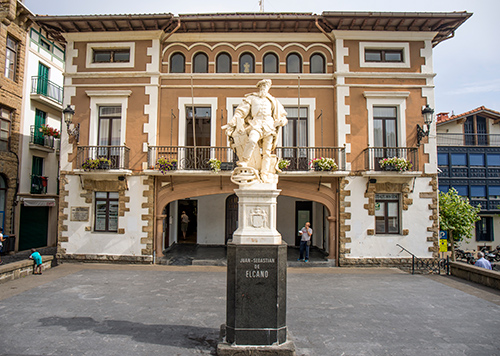
The sea has always been there, and for centuries the coexistence with the Cantabrian sea has led us to create our seafaring character. This character (to make the most of the sea’s resources) has left rich heritages and landscapes related to the sea. Commencing with this close relationship it grew and built everything that surrounds us: the orientation of our houses and homesteads, the themes of our churches, the typology of the trees in the forests, turned into wood for boats and coal for the foundries, or the crops originating from the idea of producing cider or txakolí, since these were the beverages that were taken on those long expeditions. Our towns gave birth to internationally renowned figures-navigators; among these were Juan Sebastián Elcano, Domingo Bonetxea or Manual Agote. They were an essential part in the history of the world: developing whale hunting, discovery expeditions, fishing expeditions (to Terranova and the Arctic), the development and building of the vessels and galleons, the first ships in history to navegate between Oceans.
When sea heritage is mentioned, quite often what comes to mind are the old ships kept in museums or nautical tools and old port infrastructures. Many would be surprised today if they listened to the landscape of the Urola Kosta region, a landscape of which the neighbours themselves are part, created thanks to the influence of the sea for centuries.
The regional landscape is the result of the initiatives undertaken to exploit the sea’s resources by its residents. Throughout history the results and vestiges of these maritime intitiatives have deposited themselves into our environment, like the mud on the riversides, and the result of this process is the incomparable landscape of Urola Kosta that we currently enjoy. It is therefore, a complete maritime landscape, full of heritage related to the sea; it’s enough to just look up a little to become aware of it and enjoy this reality.

